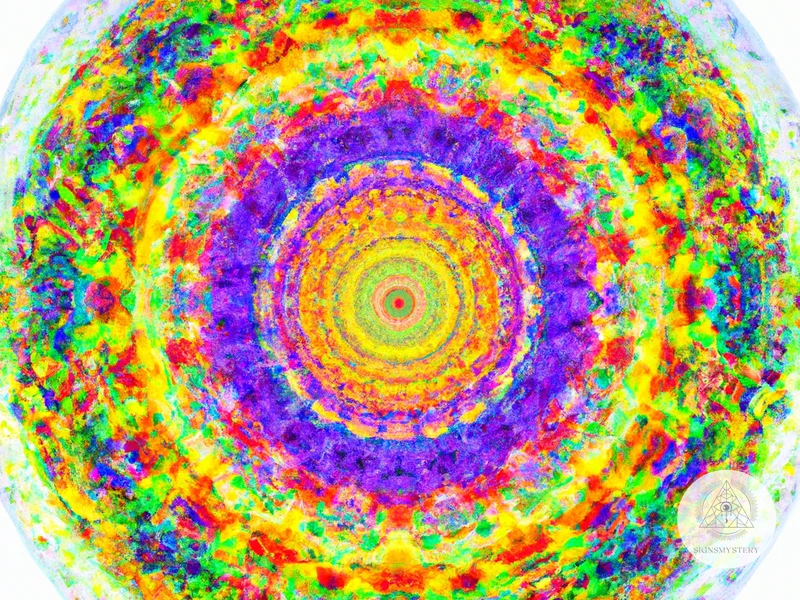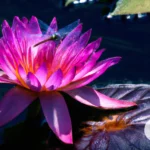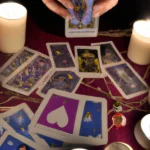The Chakra system is a fascinating and intricate concept that has been studied and explored for centuries. This ancient spiritual system originated in India and has since spread to various cultures and traditions around the world. Understanding the history and origins of the Chakra system helps us delve deeper into its significance and explore the benefits it offers for our well-being. From its roots in ancient Hindu texts to its integration into Western esotericism, the evolution of the Chakra system has been shaped by diverse influences. In this article, we will explore the rich history of the Chakra system, its connections to Buddhism and Chinese medicine, its integration into Western esotericism, and its revival in modern times. Additionally, we will delve into the significance and benefits of Chakra healing for emotional and physical well-being.
The Origins of Chakras in Ancient India
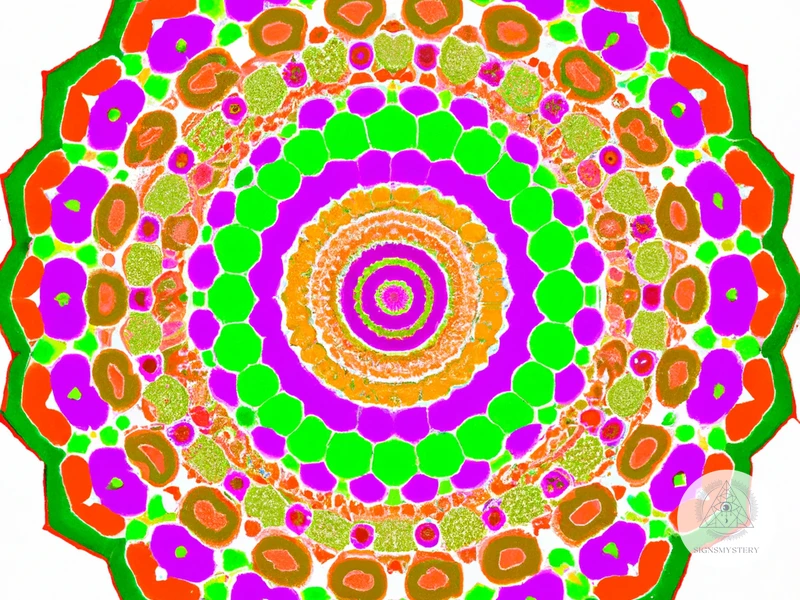
The Chakra system, with its roots in ancient India, is a profound spiritual concept that has been passed down through generations. The origins of the Chakra system can be traced back to the Vedas, ancient Hindu texts that date back over 3,000 years. It is within these sacred scriptures that the earliest descriptions of the Chakras can be found. The Vedas provide a detailed understanding of the subtle energy centers that exist within the human body, known as Chakras.
According to the Vedas, the Chakras are spinning wheels or vortexes of energy that align along the central channel of the body, known as the Sushumna. There are seven main Chakras, each associated with different qualities and attributes. These Chakras are believed to be responsible for maintaining balance and harmony in various aspects of our physical, emotional, and spiritual well-being.
The Chakra system was not only described in the Vedas but also evolved over time as Indian spiritual traditions expanded and grew. The understanding and utilization of the Chakra system became more widespread, with different practices and rituals being developed to activate and balance the Chakras. These practices included yoga, meditation, breathwork, and chanting, all aimed at harnessing the energy within the Chakras for spiritual growth and enlightenment.
Ancient India’s deep connection to the Chakra system extended beyond the boundaries of Hinduism. Buddhism, which originated in India, also incorporated the concept of Chakras into its philosophy and meditation practices. Traditional Chinese Medicine, which has its roots in ancient Chinese culture, recognized similar energy points, referred to as acupuncture points, that align with the Chakra system.
Understanding the origins of the Chakra system in ancient India provides a foundation for appreciating its rich history and significance in various spiritual traditions. The next sections of this article will delve further into how the Chakra system was embraced and expanded upon in Buddhism and Chinese medicine, as well as its integration into Western esotericism.
The Vedas and Ancient Hindu Texts
The Vedas, ancient Hindu texts dating back over 3,000 years, play a significant role in the origins and understanding of the Chakra system. These sacred scriptures, composed in Sanskrit, contain hymns, rituals, and philosophical discussions that provide valuable insights into the nature and function of the Chakras.
In the Rigveda, the oldest of the four Vedas, there are references to the Chakras as vital energy centers within the human body. The concept of Chakras is mentioned in relation to the deity Agni, the god of fire, symbolizing the transformative power of energy. The Chakras are described as spinning wheels or lotuses, with each Chakra representing a specific aspect of human existence and consciousness.
The Upanishads, philosophical texts that form the concluding portions of the Vedas, delve deeper into the understanding of the Chakras. They describe the Chakras as channels for the flow of cosmic energy, referred to as Prana. These energy centers are seen as gateways to higher states of consciousness and spiritual awakening.
The ancient Hindu text known as the Yoga Sutras of Patanjali also explores the Chakra system in great detail. It outlines the path of Raja Yoga, which includes practices such as asana (physical postures), pranayama (breath control), and meditation to open and balance the Chakras. The Yoga Sutras provide a systematic approach to understanding and activating the Chakras for spiritual growth and self-realization.
The descriptions and teachings found in these ancient Hindu texts continue to shape our understanding of the Chakra system today. They serve as a foundation for the various practices, techniques, and meditations that aim to awaken and align the Chakras for optimal well-being and spiritual development.
As we explore further, we will discover how the knowledge of Chakras in ancient Hindu texts influenced the evolution of Indian spiritual traditions and their integration into other cultures and practices, such as Buddhism and Traditional Chinese Medicine.
The Evolution of Indian Spiritual Traditions
The evolution of Indian spiritual traditions played a crucial role in shaping the understanding and practice of the Chakra system. As the centuries passed, these traditions expanded and diversified, leading to the development of different schools of thought and practices related to the Chakras.
One significant development in Indian spirituality was the emergence of Tantra. Tantra, which means “weaving” or “expansion,” presented a holistic approach to spirituality that incorporated various elements such as rituals, mantras, and yogic practices. In Tantra, the Chakra system became a central aspect of spiritual growth and self-realization. The Tantric texts, known as the Tantras, provided detailed instructions on how to awaken and activate the Chakras through specific techniques and rituals.
Another significant contribution to the evolution of Indian spiritual traditions was the development of Kundalini Yoga. Kundalini, derived from the Sanskrit word for “coiled,” refers to the dormant spiritual energy that lies at the base of the spine. Kundalini Yoga aimed to awaken this dormant energy and guide it through the Chakras to achieve spiritual enlightenment and union with the divine.
The understanding and exploration of the Chakra system continued to evolve within the framework of these Indian spiritual traditions. The emphasis on spiritual practices, such as meditation, pranayama (breathwork), and asanas (yoga postures), allowed individuals to activate and balance their Chakras for personal growth and transformation. The Chakra system became an integral part of these traditions, providing a roadmap for spiritual seekers to navigate their inner landscapes and achieve higher states of consciousness.
With the evolution of Indian spiritual traditions, the Chakra system became firmly established as a fundamental aspect of spiritual development and self-realization. Its profound influence permeated various practices and philosophies, shaping the way individuals understood and experienced their own spiritual journey. From the ancient Vedas to the Tantric texts and Kundalini Yoga, the Chakra system remained at the core of Indian spiritual traditions, offering a profound path to inner awakening and self-discovery.
As we explore the Chakra system further, it’s important to recognize the diverse influences that contributed to its development. The next sections will delve into the incorporation of Chakras in Buddhism, Chinese medicine, and the Western esoteric traditions, offering a comprehensive understanding of this intricate system’s truly universal nature.
The Chakra System in Buddhism and Chinese Medicine
The Chakra system, originating in India, has found its way into various spiritual traditions, including Buddhism and Chinese Medicine. In Buddhism, the Chakras are seen as centers of energy that play a crucial role in meditation and the path to enlightenment. Each Chakra represents different aspects of human experience and consciousness.
In Buddhist philosophy, the Chakras are connected to the subtle body and are considered gateways to higher states of consciousness. They are believed to be vital energy centers that, when activated, facilitate the flow of energy and promote spiritual development. While the traditional Hindu Chakra system consists of seven main Chakras, Buddhism acknowledges numerous energy centers, referred to as the “subtle chakras.”
Meditation practices in Buddhism often involve focusing on these energy centers to awaken their potential and deepen one’s spiritual practice. By meditating on specific Chakras, practitioners aim to purify and balance the associated qualities and attributes. This enables them to transcend mundane experiences and access higher states of awareness.
In Chinese Medicine, the Chakra system finds its parallel in acupuncture points and meridians. Traditional Chinese Medicine recognizes the existence of a complex network of energy channels throughout the body, known as meridians, which correspond to the Chakras in Indian tradition. These meridians are accessed through specific points, which align with the location of the Chakras.
Within the context of Chinese Medicine, the Chakras are seen as points of convergence for various physiological and energetic functions within the body. They play a vital role in maintaining health and well-being by regulating the flow of vital energy, or Qi. When the Chakras are balanced and harmonious, the body is in a state of optimal health.
Journeying through the Chakra system in both Buddhism and Chinese Medicine allows individuals to deepen their understanding of the subtle energy within themselves and cultivate a greater sense of connection and well-being. These practices serve as powerful tools for personal growth, spiritual awakening, and physical health.
The next sections of this article will explore the influence of the Theosophical Society in bringing the Chakra system to the West, as well as its revival and modern understanding in the present day.
Chakras in Buddhist Philosophy and Meditation
In Buddhist philosophy and meditation, the concept of Chakras takes on a slightly different interpretation compared to its origins in Hinduism. While Hinduism focuses on the seven main Chakras aligned along the Sushumna, Buddhism typically emphasizes the presence of five Chakras, known as Dhyani Buddhas, which correspond to different elemental qualities. These Chakras are associated with specific Buddhas or Bodhisattvas and serve as focal points for meditation and spiritual development.
The five Chakras in Buddhist philosophy are as follows:
1. Akshobhya Chakra: This Chakra, located in the forehead or third eye region, represents the element of water. It is associated with the Buddha Akshobhya and is linked to the cultivation of wisdom and clarity in meditation practices.
2. Ratnasambhava Chakra: Corresponding to the element of earth, the Ratnasambhava Chakra is situated near the navel area. It is linked to the Buddha Ratnasambhava and symbolizes abundance, generosity, and the transformation of negative qualities into positive ones.
3. Amitabha Chakra: Located in the heart center, the Amitabha Chakra represents the element of fire. It is associated with the Buddha Amitabha and is associated with compassion, love, and the dissolution of ego-centered attachments.
4. Amoghasiddhi Chakra: Situated near the throat area, the Amoghasiddhi Chakra symbolizes the element of air. It is linked to the Buddha Amoghasiddhi and represents fearlessness, action, and the transformation of aggression into wisdom.
5. Vairochana Chakra: Positioned at the crown of the head, the Vairochana Chakra denotes the element of space. It is associated with the Buddha Vairochana, representing purity, interconnectedness, and the realization of ultimate truth or enlightenment.
In Buddhist meditation practices, the focus on these Chakras serves as a means to cultivate specific qualities and overcome obstacles on the path to enlightenment. Practitioners may visualize these Chakras as radiant, luminous spheres of light, and engage in mantra recitation or visualization techniques to awaken and activate their energies. By working with these Chakras, individuals aim to purify their minds, develop wisdom and compassion, and ultimately attain liberation.
The incorporation of Chakras in Buddhist philosophy and meditation highlights the adaptability and expansion of the Chakra system beyond its original Hindu origins. This cross-pollination of spiritual concepts is a testament to the interconnectedness and universality of spiritual wisdom across different traditions.
Chakra Points in Traditional Chinese Medicine
In Traditional Chinese Medicine (TCM), the concept of energy centers within the body aligns closely with the Chakra system. TCM recognizes a network of energy pathways known as meridians, through which Qi (pronounced “chee”) flows. These meridians connect to various points on the body, known as acupuncture points or acupoints. While the specific locations of these acupoints differ from the Chakra system, there are correlations between certain Chakra points and acupoints in TCM.
Below are some of the key Chakra points in the body and their corresponding acupoints in TCM:
1. Root Chakra (Muladhara): This Chakra, located at the base of the spine, is associated with grounding and stability. In TCM, the acupoint that aligns with the Root Chakra is the Yongquan point. It is located on the sole of the foot, in the depression just below the ball of the foot. Stimulating this acupoint in TCM is believed to promote stability and strengthen the foundation of the body’s energy.
2. Sacral Chakra (Swadhisthana): The sacral Chakra, located in the lower abdomen, is associated with creativity and passion. In TCM, the acupoint that corresponds to the Sacral Chakra is the Qihai point. It is located about two finger-widths below the navel. Activating this acupoint is believed to enhance the flow of energy in the lower abdomen and promote emotional well-being.
3. Solar Plexus Chakra (Manipura): The Solar Plexus Chakra, situated in the upper abdomen, is associated with personal power and confidence. In TCM, the acupoint that corresponds to this Chakra is the Zhongwan point. It is located in the center of the abdomen, about four finger-widths above the navel. Stimulating this acupoint is believed to strengthen the digestive system and promote a sense of personal empowerment.
4. Heart Chakra (Anahata): The Heart Chakra, located in the center of the chest, is associated with love and compassion. In TCM, the acupoint that aligns with the Heart Chakra is the Shenmen point. It is located on the wrist, in the depression just below the base of the palm. This acupoint is believed to help calm the mind, reduce anxiety, and open the heart to love.
By exploring the connections between Chakra points and acupoints in TCM, we can gain a deeper understanding of the interplay between energy systems within the body. These correlations highlight the shared wisdom across different ancient healing traditions and provide additional avenues for exploring and balancing our energy centers.
Chakras in the West: The Theosophical Society
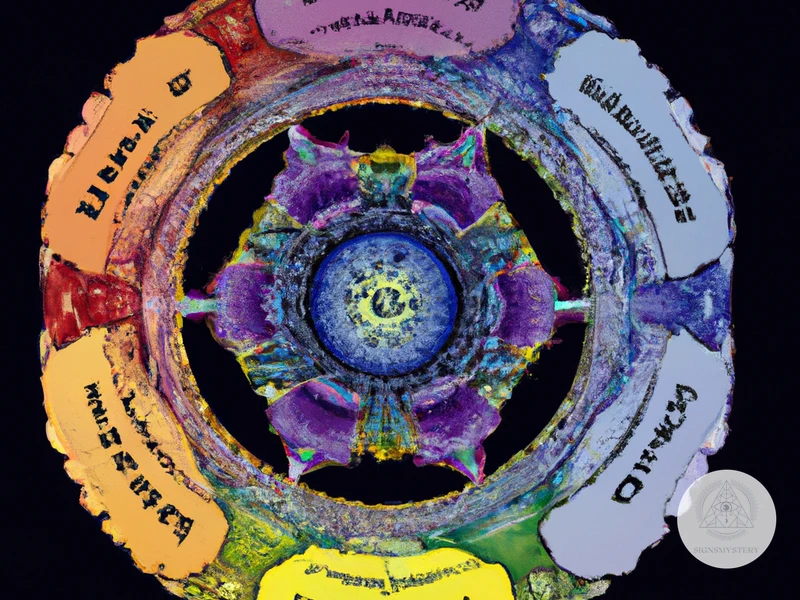
The Theosophical Society, founded in the late 19th century, played a crucial role in introducing the Chakra system to the Western world. Helena Blavatsky, a prominent figure within the Society, was instrumental in popularizing esoteric teachings, including the concept of Chakras. Blavatsky’s writings, particularly in her influential book “The Secret Doctrine,” incorporated Eastern spiritual concepts and philosophies into Western esotericism.
Blavatsky’s work sparked the Western interest in Chakras as she presented the Chakra system as a key component of spiritual evolution and enlightenment. She highlighted the interconnectedness of the Chakras with the human psyche and emphasized the importance of balancing and activating these energy centers for personal growth and self-realization.
The Theosophical Society’s influence extended beyond Blavatsky’s work. It established a platform for further exploration and interpretation of the Chakra system, attracting scholars, philosophers, and spiritual seekers from various backgrounds. The Society conducted extensive research, discussions, and lectures on the Chakras, contributing to a deeper understanding and integration of this ancient spiritual system into Western esoteric traditions.
One notable figure within the Theosophical Society was Charles Leadbeater, who delved even deeper into the study of Chakras. Leadbeater claimed to have clairvoyant abilities, which allowed him to visualize and map the Chakra system in great detail. His work further expanded the Western understanding of the Chakras, providing intricate descriptions of their colors, shapes, and functions.
With the Theosophical Society’s efforts, the Chakra system gained recognition and popularity among Western esoteric circles, laying the foundation for its integration into various spiritual and New Age practices. Today, Chakra healing, meditation, and balancing techniques are widely practiced in the West, thanks in part to the influence of the Theosophical Society and its commitment to sharing esoteric knowledge.
The Theosophical Society’s contributions to the dissemination and understanding of the Chakra system in the West have been invaluable. They opened up doors to a new way of perceiving and exploring the human energy system, bridging the gap between Eastern and Western spiritual traditions. As we move forward in this article, we will explore the revival and modern understanding of Chakras, which owe much to the groundwork laid by the Theosophical Society.
The Influence of Blavatsky and the Theosophical Movement
The Theosophical Movement, led by the influential figure Helena Blavatsky, played a significant role in introducing and popularizing the concept of Chakras in the Western world. Blavatsky, a renowned esotericist and spiritual teacher, founded the Theosophical Society in the late 19th century, aiming to promote the study of universal truths present in both Eastern and Western philosophies.
Blavatsky’s writings, particularly her seminal work “The Secret Doctrine,” delved into the mystical aspects of ancient spiritual traditions, including the Chakra system. She presented the Chakras as vital energy centers within the human body, explaining their functions and the significance they hold for spiritual evolution. Blavatsky’s teachings expanded the understanding of Chakras beyond the confines of India and brought them to the attention of the Western world.
Under Blavatsky’s guidance, the Theosophical Society undertook extensive research and exploration into various esoteric and spiritual subjects, including the Chakra system. This exploration involved studying ancient texts, delving into Eastern philosophies, and engaging in practices such as meditation and energy work. The society’s efforts led to a broader dissemination of knowledge about Chakras and an increased interest in spiritual systems that incorporated them.
Blavatsky’s influence on the integration of the Chakra system into Western esotericism cannot be overstated. Her writings and teachings sparked a wave of curiosity and inquiry within the spiritual community, leading to the development of new frameworks and practices centered around Chakras. The Theosophical Society’s work paved the way for future thinkers and practitioners to explore and incorporate Chakras into their spiritual journeys.
The influence of Helena Blavatsky and the Theosophical Movement was instrumental in bringing the concept of Chakras to the Western world’s attention. Through her writings and teachings, Blavatsky expanded upon the understanding of Chakras and provided a platform for further exploration and integration into Western esoteric traditions. The next section of this article will delve into the revival and modern understanding of Chakras, building upon the foundation laid by Blavatsky and the Theosophical Society.
The Integration of Chakras into Western Esotericism
The integration of Chakras into Western esotericism can be attributed to the influence of the Theosophical Society, a spiritual and philosophical movement that gained popularity in the late 19th and early 20th centuries. Led by Helena Blavatsky, the Theosophical Society sought to bridge the gap between Eastern and Western spiritual philosophies. Blavatsky introduced the concept of Chakras to Western audiences through her influential writings and teachings.
Blavatsky’s seminal work, “The Secret Doctrine,” delved into the esoteric teachings of ancient wisdom traditions, including the Chakra system. She presented the Chakras as key energy centers within the human body that corresponded to different levels of consciousness and spiritual development. Blavatsky’s writings sparked widespread interest in the Chakra system among Western esoteric seekers.
The Theosophical Society played a crucial role in popularizing the study and understanding of Chakras in the West. Its teachings and practices influenced various spiritual and occult movements, including the Hermetic Order of the Golden Dawn, a prominent occult organization based in England. The Golden Dawn integrated the Chakra system into its rituals and initiation processes, further establishing the Chakras as a vital component of Western esotericism.
The integration of Chakras into Western esotericism continued to evolve with the work of other influential figures. Carl Jung, the renowned psychologist, explored the significance of Chakras in relation to the human psyche and the process of individuation. Jung’s research and writings on the collective unconscious and archetypes contributed to the understanding of Chakras as symbolic representations of psychological and spiritual transformation.
The New Age movement, which gained momentum in the latter half of the 20th century, further popularized the Chakra system in Western culture. New Age practitioners embraced the Chakras as a means of personal growth and spiritual development. The Chakra system became a central focus in various alternative healing modalities, energy work, and meditation practices.
The integration of Chakras into Western esotericism can be attributed to the influence of the Theosophical Society and the subsequent exploration by other notable figures. From Blavatsky’s writings to the embracement by the New Age movement, the Chakra system has found its place in Western spiritual practices and continues to be a subject of study and fascination for those seeking spiritual enlightenment and self-discovery.
The Revival and Modern Understanding of Chakras
The revival of interest in Chakras and their modern understanding can be attributed to the influence of various individuals and movements. One notable figure in this revival is psychologist Carl Jung. Jung’s groundbreaking work on the psyche and the concept of individuation included the acknowledgment of a universal collective unconscious that encompassed archetypes and symbols. These ideas resonated with the Chakra system, as the Chakras can be seen as symbolic representations of different aspects of the self and stages of personal growth.
Jung’s exploration of the Chakra system sparked interest and further research among psychologists, therapists, and individuals interested in personal development. The integration of Chakras into psychological practices and therapies became more common, with techniques such as Chakra visualization and meditation being utilized to promote emotional healing and self-awareness.
Another significant factor in the modern understanding of Chakras is the emergence of the New Age movement. In the late 20th century, there was a growing interest in alternative spirituality, metaphysics, and holistic healing. Chakras played a crucial role in this movement, as they offered a framework for understanding and exploring the energetic aspects of the self. The New Age movement popularized the use of Chakra balancing practices, such as Reiki, crystal healing, and energy healing, to promote overall well-being.
With the rise of the internet and accessible information, the knowledge and understanding of Chakras have become more widespread. People from various backgrounds and belief systems have embraced the concept of Chakras and incorporated Chakra healing practices into their daily lives. Numerous books, workshops, and online resources provide guidance and techniques for individuals to explore and work with
Subscribe to Our Newsletter
Sign up to receive the latest news and updates.
The modern understanding of Chakras is a dynamic and evolving field, with ongoing research and exploration expanding our knowledge and insights. As people continue to seek holistic approaches to health and well-being, the Chakra system remains a valuable tool for understanding and harmonizing the mind, body, and spirit.
Click here to learn more about the diverse colors and varieties of fluorite, a crystal often associated with Chakra healing practices.
Influence of Psychologist Carl Jung
The influence of psychologist Carl Jung played a significant role in the modern understanding and exploration of Chakras. Jung, a renowned figure in the field of psychology, had a deep fascination with Eastern philosophies and spiritual concepts. His explorations into the human psyche and the collective unconscious led him to recognize the parallels between the Chakra system and his own theories of psychological development and individuation.
Jung saw the Chakras as representations of psychological archetypes and symbolic manifestations of the unconscious mind. He believed that understanding and working with the Chakras could lead to self-discovery, psychological integration, and personal growth. Jung’s insights and writings on the Chakras created a bridge between Eastern spirituality and Western psychology, opening up a new realm of exploration for those interested in the human psyche.
One of Jung’s most notable contributions to the understanding of Chakras was his concept of individuation. He suggested that the activation and balancing of the Chakras could lead to individuation – the journey towards self-actualization and becoming one’s true self. According to Jung, the Chakras represent different stages of psychic development, from the basic instincts and survival needs associated with the root Chakra to the higher consciousness and spiritual connection represented by the crown Chakra.
Jung’s influence on the modern understanding of Chakras continues to resonate in various fields, including psychology, spirituality, and holistic healing. His work has inspired therapists and spiritual seekers alike to explore the connection between the Chakra system and psychological well-being. By integrating Jungian psychology with Chakra healing practices, individuals can tap into the transformative power of the Chakras for personal growth, healing, and self-realization.
It is important to note that while Jung’s influence on the understanding of Chakras is significant, his interpretations are just one perspective among many. The Chakra system draws upon ancient spiritual traditions and continues to evolve as it is embraced by different cultures and belief systems. In the next section of this article, we will explore how the Chakra system found its place within the New Age movement and its contemporary significance in the realm of healing and well-being.
Introduction of Chakras to the New Age Movement
During the 1960s and 1970s, a spiritual and cultural movement known as the New Age Movement emerged, bringing various alternative spiritual practices and beliefs to the forefront. As part of this movement, the concept of Chakras began to gain popularity and was introduced to a wider audience. The New Age Movement embraced and integrated teachings from various traditions, including Hinduism, Buddhism, and esoteric philosophies. Chakra healing and balancing practices became an integral part of the New Age Movement’s holistic approach to well-being.
One of the key figures who played a significant role in introducing Chakras to the New Age Movement was the Swiss psychologist Carl Jung. Jung explored the concept of the psyche and believed in the existence of a collective unconscious, a reservoir of shared human experiences and symbols. His theories resonated with the idea of Chakras as energy centers within the body and their connection to psychological and spiritual well-being.
Additionally, the Theosophical Society, founded in the late 19th century, played a crucial role in spreading knowledge about Chakras to the Western world. Led by prominent figures such as Helena Blavatsky and Alice Bailey, the Theosophical Society aimed to bridge the gap between Eastern and Western spiritual traditions. Blavatsky’s writings, particularly “The Secret Doctrine,” introduced Western audiences to the esoteric teachings of Eastern philosophies, including the Chakra system.
With the rise of the New Age Movement, Chakras became more widely recognized and incorporated into various holistic practices. The integration of Chakras into mainstream consciousness led to the development of new methods, such as crystal healing, color therapy, and sound therapy, all aimed at balancing and harmonizing the energy centers within the body. Crystals such as Aventurine gained popularity for their associations with enhancing creativity and promoting emotional healing.
As Chakras became more widely embraced within the New Age Movement, books, workshops, and healing modalities dedicated to understanding and working with the Chakra system proliferated. Today, the concept of Chakras is widely recognized and practiced not only within the New Age Movement but also within various alternative and complementary healing modalities. The integration of Chakras into the New Age Movement has provided individuals with tools and techniques to achieve balance and harmony on physical, emotional, and spiritual levels.
The Significance and Benefits of Chakra Healing
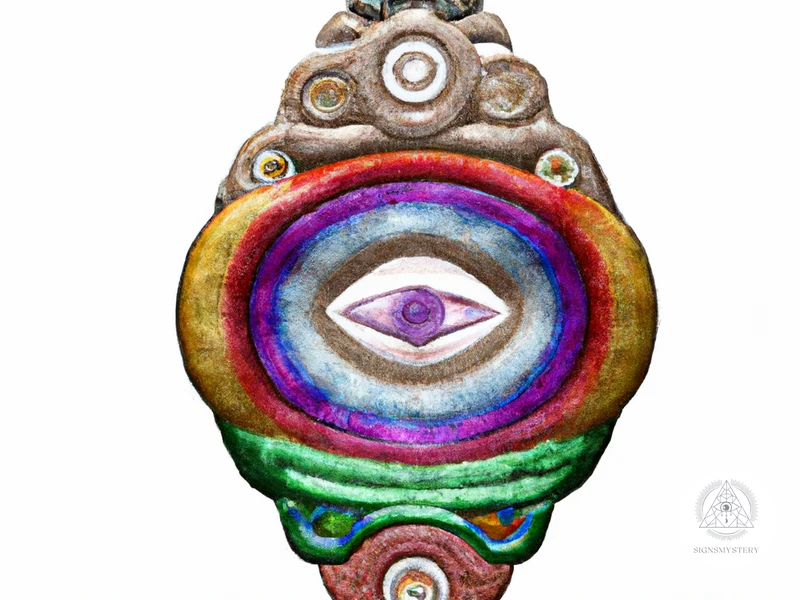
Chakra healing has gained significant attention in recent years for its potential to promote overall well-being and balance. The Chakras are believed to be interconnected energy centers that directly impact our physical, emotional, and spiritual states. When the Chakras are balanced and flowing harmoniously, we experience a sense of vitality, clarity, and inner peace. However, when the Chakras become imbalanced or blocked, it can lead to various physical and emotional issues.
One of the main advantages of chakra healing is its ability to identify and address imbalances within the energy system. By utilizing various techniques such as meditation, yoga, sound therapy, and energy healing practices like Reiki, individuals can work to restore balance and remove blockages within their Chakras. By doing so, they aim to enhance the flow of energy throughout the body, promoting overall well-being.
Chakra healing is also recognized for its potential to address specific issues related to each energy center. For example, the Root Chakra, located at the base of the spine, is associated with stability and grounding. When this Chakra is imbalanced, individuals may experience feelings of insecurity or instability. By focusing on balancing and energizing the Root Chakra, individuals can cultivate a sense of security and stability in their lives.
Another significant benefit of chakra healing is its potential to promote emotional healing and self-awareness. Each Chakra is associated with specific emotions and areas of life. By exploring and working with these energy centers, individuals can gain insight into their emotional patterns and address any unresolved emotional wounds. Chakra healing practices can help individuals release emotional traumas, foster self-acceptance, and cultivate emotional balance.
Physical well-being is also believed to be influenced by the Chakras. The energy centers are connected to various organs and systems in the body. When imbalances occur within a specific Chakra, it can manifest as physical symptoms or ailments. By addressing the underlying energetic imbalances through chakra healing, individuals may experience improvements in their physical health and vitality.
Chakra healing offers a holistic approach to well-being by addressing imbalances within the energy centers of the body. By aligning and harmonizing the Chakras, individuals can experience physical, emotional, and spiritual benefits. By incorporating chakra healing practices into their daily lives, individuals can promote overall vitality, emotional balance, and a deeper connection to their true selves.
Understanding Chakra Imbalances and Blockages
Understanding chakra imbalances and blockages is essential for harnessing the full potential of the chakra system and achieving overall well-being. When the chakras are in a state of balance, energy flows freely, promoting harmony and vitality within the body and mind. However, various factors can disrupt the balance and flow of energy, leading to imbalances and blockages within the chakras.
Chakra imbalances can manifest in different ways, both physically and emotionally. For example, an imbalanced root chakra, located at the base of the spine, can cause feelings of insecurity, fear, and a lack of grounding. Physical symptoms may include lower back pain, constipation, or issues with the feet and legs. Similarly, an imbalanced heart chakra can result in difficulties with self-love, compassion, and forming healthy relationships. Physical symptoms may include chest tightness, heart palpitations, or respiratory issues.
Blockages within the chakras occur when energy becomes stagnant or unable to flow freely. These blockages can be caused by unprocessed emotions, trauma, negative beliefs, or everyday stress. When a blockage occurs, the affected chakra may become underactive or overactive, causing disturbances in its associated qualities and functions. For instance, a blocked throat chakra can impair one’s ability to express oneself and communicate effectively, leading to feelings of frustration and inhibited creativity.
Recognizing and addressing chakra imbalances and blockages is crucial for restoring equilibrium and promoting healing. Techniques such as chakra meditation, energy healing, sound therapy, and yoga practices can help in identifying and releasing these energy blockages. Working with crystals and gemstones, such as aventurine, can also be beneficial in balancing the chakras. Aventurine is known for its ability to enhance creativity, promote emotional healing, and restore a sense of balance and harmony within the chakra system. (Learn more about the healing properties of aventurine here)
By understanding chakra imbalances and blockages, individuals can actively engage in practices that promote the flow of energy and bring the chakras back into harmonious alignment. This process of chakra healing not only supports emotional and physical well-being but also fosters spiritual growth and a deeper connection to oneself and the world.
Utilizing Chakra Healing for Emotional and Physical Well-being
Utilizing Chakra Healing for Emotional and Physical Well-being:
Chakra healing is a practice that focuses on restoring balance and harmony to the Chakra system, which in turn promotes emotional and physical well-being. Each Chakra is associated with specific qualities and attributes, and when they are in balance, they contribute to a sense of overall health and vitality.
One way to utilize Chakra healing is through meditation and visualization. By directing our attention to each individual Chakra, we can identify any imbalances or blockages and work towards releasing them. During this process, it is common to visualize the Chakra spinning and radiating vibrant, healing energy throughout the body.
Another effective method for Chakra healing is through the use of crystals and gemstones. Each Chakra is thought to resonate with specific crystals, and by placing them on or near the corresponding Chakra, we can facilitate healing and restoration. For example, placing a green Aventurine crystal on the heart Chakra can help to enhance feelings of love and compassion, while also promoting emotional healing and balance. If you want to know more about this topic, you can read our article on the healing properties of Aventurine.
In addition to meditation and crystals, energy healing techniques such as Reiki can also be utilized to balance the Chakras. Reiki practitioners use their hands to direct healing energy to each Chakra, helping to remove any energy blockages and restore proper flow. This can lead to a deep sense of relaxation, stress reduction, and overall well-being.
When Chakra healing is practiced consistently, it can have profound effects on our emotional and physical state. By addressing imbalances within the Chakra system, we can release emotional baggage, cultivate self-awareness, and experience greater clarity and personal growth. It is important to note that Chakra healing should not be seen as a substitute for medical or professional treatment, but rather as a complementary practice that supports overall well-being.
Utilizing Chakra healing for emotional and physical well-being offers a holistic approach to health and wellness. By understanding and working with the Chakra system, we can tap into the profound wisdom of ancient traditions and unlock our true potential for healing, growth, and transformation.
Conclusion
In conclusion, the Chakra system has a deep and fascinating history that spans across ancient India and beyond. From its origins in the Vedas to its incorporation into Buddhism and Chinese medicine, the concept of Chakras has evolved and expanded over time. The Chakra system’s journey from ancient texts to modern understanding is a testament to its enduring relevance and impact.
Throughout history, the Chakra system has been embraced and integrated into various spiritual traditions and practices. Whether through yoga, meditation, acupuncture, or energy healing, the Chakras play a crucial role in promoting balance and well-being on physical, emotional, and spiritual levels.
In modern times, the understanding of Chakras has been further developed and popularized, thanks in part to influential figures such as psychologist Carl Jung and the New Age movement. Today, Chakra healing techniques and practices are widely utilized to address imbalances and promote holistic well-being.
The significance of Chakra healing lies in its ability to address imbalances and blockages within the energy system. By identifying and working with the Chakras, individuals can enhance their emotional and physical well-being, fostering a deeper connection with themselves and the world around them.
In conclusion, the Chakra system serves as a powerful tool for self-discovery, healing, and spiritual growth. Exploring and understanding the Chakra system allows us to tap into our innate potential and cultivate harmonious energy flow within ourselves. By embracing the wisdom and teachings of the Chakras, we can embark on a transformative journey towards greater balance, alignment, and enlightenment in our lives.
Frequently Asked Questions
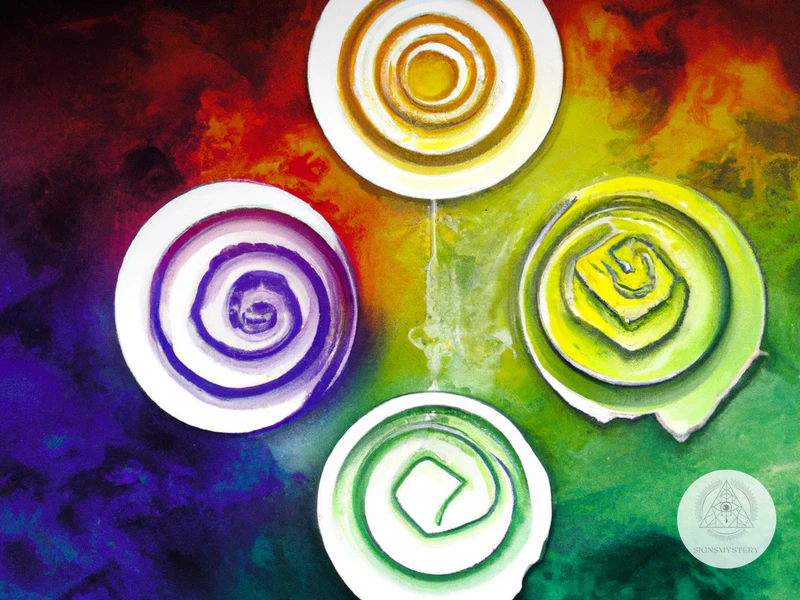
1. How old is the concept of Chakras?
The concept of Chakras dates back over 3,000 years to ancient India, with its earliest descriptions found in the sacred Hindu texts known as the Vedas.
2. Can anyone activate and balance their Chakras?
Yes, anyone can work on activating and balancing their Chakras through various practices such as yoga, meditation, breathwork, and energy healing techniques.
3. Are there more than seven Chakras in the human body?
While the traditional understanding includes seven main Chakras, some spiritual traditions recognize additional minor Chakras or energy centers within the body.
4. Do Chakras exist in physical form?
Chakras are not physical structures but are believed to be subtle energy centers that exist within the energetic body or the subtle body.
5. What happens when the Chakras are imbalanced?
When the Chakras are imbalanced, it can manifest as physical, emotional, or spiritual disturbances. Restoring balance to the Chakras is believed to promote overall well-being.
6. Can Chakra healing help with emotional healing?
Yes, Chakra healing can be beneficial for emotional healing as imbalances in the Chakras can contribute to emotional blockages and disturbances. By restoring balance to the Chakras, emotional well-being can be enhanced.
7. Can Chakra meditation improve spiritual awareness?
Chakra meditation is a powerful practice that focuses on activating and balancing the Chakras. By doing so, it can deepen one’s spiritual awareness and connection to the higher self.
8. Are the Chakras connected to our physical health?
Yes, the Chakras are believed to be interconnected with our physical health. Imbalances in the Chakras can manifest as physical symptoms and restoring balance may support overall well-being.
9. Can working with the Chakras enhance creativity?
Working with the Chakras can indeed enhance creativity. When the creative energy center, known as the Sacral Chakra, is in balance, it can unlock creative potential and inspire artistic expression.
10. Can the Chakra system be integrated with modern medicine?
While the Chakra system is not a substitute for medical treatment, it can be complementary to modern medicine, supporting overall well-being and promoting a holistic approach to health.
References
Frequently Asked Questions

What is the Chakra system?
The Chakra system is a conceptual framework that originated in ancient Indian spiritual traditions and encompasses seven energy centers in the human body. These centers are believed to be responsible for the flow and balance of energy throughout the body.
Where did the concept of chakras originate?
The concept of chakras originated in ancient India, specifically from the spiritual teachings found in the Vedas and other ancient Hindu texts.
Do all spiritual traditions recognize the chakra system?
No, the chakra system is primarily associated with Indian spiritual traditions. However, variations and similar concepts can be found in other spiritual traditions such as Buddhism and Chinese medicine.
How were chakras integrated into Buddhism?
In Buddhism, chakras are understood as focal points of energy within the body that can be purged of negative energy through meditation and mindfulness practices.
What role do chakras play in Traditional Chinese Medicine?
In Traditional Chinese Medicine, chakras are not explicitly recognized. However, similar energy points called acupoints are used in acupuncture and acupressure to restore balance and harmony in the body.
Who popularized the concept of chakras in the West?
The concept of chakras was popularized in the West by the Theosophical Society, a spiritual organization founded in the late 19th century. Helena Blavatsky and other influential members of the society played a significant role in introducing and spreading knowledge about chakras.
How did chakras become integrated into Western esotericism?
Chakras became integrated into Western esotericism through the Theosophical Society’s teachings, which drew inspiration from various mystical and occult traditions. This integration led to the inclusion of chakras in practices such as yoga, meditation, and energy healing in the West.
Did psychologist Carl Jung have any influence on the understanding of chakras?
Yes, Carl Jung’s exploration of the collective unconscious and archetypes influenced the modern understanding of chakras by providing a psychological framework for understanding the symbolism and significance of these energy centers.
How did chakras become associated with the New Age movement?
Chakras became associated with the New Age movement through the blending of Eastern and Western spiritual practices and beliefs. The New Age movement embraced the concept of chakras as a means of achieving personal growth, healing, and spiritual development.
What are the benefits of chakra healing?
Chakra healing is believed to promote balance and harmony in the body, mind, and spirit. It has been associated with various benefits, including improved physical health, enhanced emotional well-being, and greater spiritual connection.

